Best PC fans in 2024: I've put these case fans through their paces to find the coolest and quietest
The best PC fans will keep your gaming PC cool and quiet.

The best PC fans will keep even the most intense gaming rig cool. PC builders often overlook fans when buying components, but cool hardware is essential for optimal gaming performance. We recommend making sure your fans are up to a high standard, for both cooler and quieter PC operation.
Right now, our testing points to the Noctua NF-A12x25 PWM as the best PC fan today. With Noctua's reputation for making a mean PC fan, that should come as no surprise to many. Though for anyone looking to spend less, the cheaper Noctua NF-S12B redux-1700 also does a great job. Neither fan is loud, either.
But I'm sure we can all agree that poor airflow is bad. It'll lead to your PC operating at suboptimal temperatures, which is sure to affect the performance and durability of your machine's important parts. If you plan on overclocking, a couple of extra fans (or the best CPU coolers) will help keep everything running smoothly. I've picked out some of the best PC fans from those tested below, noting the key points that make them stand out. Stay cool.

Jacob has been testing fans for over half a decade. As someone that often likes to get into the weeds for each and every PC build he works on, he pays close attention to pressure ratings and airflow measurements of each one. He brings that level of attention to this guide, along with his very own at-home wind tunnel and anemometer setup to test manufacturer's claims and decide on his top picks.
The quick list
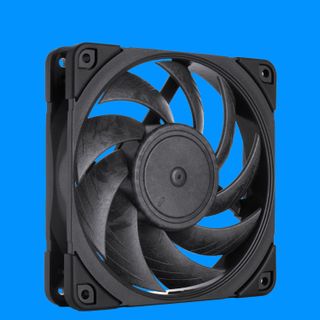
The best overall
It may come as no surprise to some, but Noctua makes a mean fan. The NF-A12x25 is its premium all-rounder, and it's pretty much great for any position inside your PC.
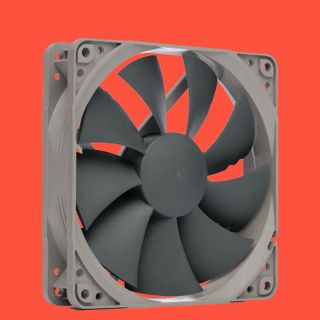
The best affordable
Noctua's premium fans can be pretty expensive. I'd say they're usually worth it, but nevertheless, they won't suit everyone's budget. This NF-P12 redux fan is a cheaper option than the A12x25 but importantly retains the quality we've come to expect.
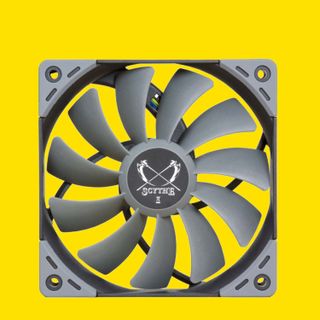
The best budget
You will notice a drop in the quality of the materials used with the Scythe, but it is importantly still a good performer capable of keeping your components cool. That's ultimately what matters most.
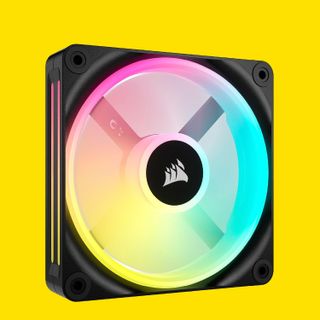
The best RGB
Looks are important, even if performance matters most. Thankfully, the Corsair iCUE Link QX120 has plenty of both, with gorgeous and highly programmable RGB lighting overlaid on a tip-top fan design.

The best affordable RGB
Good fans come in threes, and this triple-pack is easier on the wallet than piecemeal fan procurement. If you're filling out a PC all at once, this NZXT F120 RGB Duo comes with everything you need to light it up and cool it down.
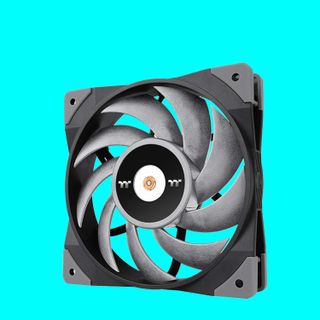
The best for radiators
Static pressure is all-important when it comes to pushing air through a radiator or dense mesh. That's the sort of job we rate these Thermaltake fans for.
Recent updates
This guide was updated on November 22, 2024 to ensure our recommendations are up-to-date (they are). We reckon these are still the best PC fans to keep your rig running nice and cool, and possibly looking cool, too.
The best PC fan







1. Noctua NF-A12x25 PWM
Our expert review:
Specifications
Reasons to buy
Reasons to avoid
✅ You'll accept nothing but the best: Noctua may charge a pretty penny for the NF-A12x25, but it's worth it for the all-round performance this fan offers. It's great no matter how you intend to use it—as a case fan, on a radiator or anywhere else.
❌ You want RGB lighting: You won't find an RGB LED anywhere on the NF-A12x25, nor anywhere else in Noctua's lineup. You'll be lucky to get a fan in anything except brown, though there are some Chromax Black versions like the one noted here for a more subtle look.
The Noctua NF-A12x25 PWM is a clear and easy pick for the best PC fan. If you're looking for a top-tier 120 mm model that can move a lot of air, the awkwardly named NF-A12x25 blows away the competition. Of all the fans we tested, this model pumped the most air through our test rig.
You can decide between khaki-and-mud or black versions—pick your poison. We've tested the Chromax.black version of the fan, as seen in the pictures above, though it's only really different for the smart black colourway and additional Chromax corner pieces. The specs all remain the same.
The NF-A12x25 is a great all-rounder and can be used as both a case fan or stuck on a radiator with great effect. For a bit more info on that, and to understand Noctua's naming, check out Noctua's guide.
The NF-A12x25 was the quietest fan we tested when running at lower RPM. Our numbers have it putting out less noise at 1200 RPM than some fans running 300 RPM slower. Since those mid-range speeds are generally more likely to come up in day-to-day use, the NF-A12x25 is an excellent choice for your average gaming PC while still giving it the headroom to spin up to 2000 RPM in the middle of a heatwave.
The NF-A12x25 lives up to the legacy we've come to expect from Noctua. It's also a nice touch how many accessories come with the NF-A12x25, from a 12-inch extension cable and a Y-splitter to many rubber vibration dampers. The price is high, but it's hard to argue the value.
While work is still being done to nail down its next-gen fan with an absurdly small clearance between fan tips and enclosure, until that's ready and we've had a chance to test it out, the Noctua NF-A12x25 is a great choice.
The best affordable PC fan







2. Noctua NF-P12 redux-1700
Our expert review:
Specifications
Reasons to buy
Reasons to avoid
✅ You want Noctua reliability without the big price tag: No doubt Noctua's best 120 mm fan is a pricey number, and that's why we love this more affordable variant. Not only does it perform nearly as well, it's available in a sleek grey.
❌ You treasure silence: This is hardly the loudest fan on the market, and it's actually one of the quieter we've tested, but you need to pay more for the NF-A12x25 for even quieter operation, or something like the Corsair iCUE Link QX120 RGB for zero-RPM.
The NF-P12 redux-1700 is a more affordable fan and the best on a moderate budget. Noctua builds fans that last a long time, move a lot of air, and do it quietly. A few issues, however: until recently, buying Noctua fans meant committing yourself to a hit-or-miss khaki-and-mud color scheme straight out of the '70s and spending a pretty penny.
Thankfully, this NF-P12 redux-1700 helps out in both departments, as the more affordable and stylish option to the NF-A12x25 PWM.
Noctua's redux line comes in a modern gray-and-another-gray look that won't detract from the rest of your PC build. It's not as quiet nor as efficient as the blacked-out NF-A12x25 PWM, but it is much cheaper. It's more or less half the price. The NF-P12 redux-1700 balances great performance with a budget-friendly price tag and looks great in the process. It's a fan more tailored to use on a radiator than as a case fan, but it does well in both uses. It's a bit more of an all-rounder than the NF-S12B redux-1200, which we used to recommend in this spot, and runs faster too.
You can save some money and pick the NF-S12B redux-1200 if you are solely using these fans for your case cooling. However, I do like the flexibility in the redux-1700 for about a dollar more. We have a properly budget PC fan option below, should you need it.
You'll find no RGB lighting here—no frills of any kind, really. But the NF-P12 redux-1700's Self-Stabilising Oil Pressure Bearings will last for years while moving lots of air around and keeping very quiet. It's a clear pick for any modern PC build.
The best budget PC fan




3. Scythe Kaze Flex 120 PWM
Our expert review:
Specifications
Reasons to buy
Reasons to avoid
✅ You can't spend lots: Simply put, the Scythe Kaze Flex 120 PWM is the best PC fan on a budget. If you can spend any more, we recommend you do, as these fans don't perform as well as more premium models.
❌ You don't want to hear your PC: These fans really are rather loud at any speed, and that means they can be annoying for cases that are particularly open or close to your ears, such as on a desk.
As the best budget PC fan, the Kaze Flex 120 PWM arrives in a cheap plastic package, looking more like it came from an auto shop than a modern PC retailer. Side-by-side with Noctua's Redux packaging, or Corsair's weighty boxes, Scythe feels like a budget fan solution.
To be fair to Scythe, it is selling the Kaze Flex for pretty cheap. And once it's inside your PC case you aren't going to notice the cheaper plastic so much.
The Kaze Flex 120 PWM we tested is one of the company's better models, though. At 1200 RPM, the Kaze Flex 120 moved more air in our test rig than some of the competition (Corsair, for instance) did at 1400 or even 1600 RPM, presumably due to having eleven blades where most fans have only nine. Lots of air goes hand-in-hand with noise, though, and indeed the Kaze Flex 120 PWM is also noisier than the competition at any given speed setting—though since it tops out at 1200 RPM, the noise is never as bad as models that spin up to higher speeds.
If you want a decent budget-friendly fan and the SF-12B isn't doing it for you? Scythe's blade-heavy blower might be the right choice. And hey, one more company hasn't dipped into the RGB LED well yet. That's worth something.
The best RGB PC fan






4. Corsair iCUE Link QX120 RGB
Our expert review:
Specifications
Reasons to buy
Reasons to avoid
✅ You crave bright lights: The QX120 are the best RGB fans first and foremost, due to their beautiful and bright lighting modes.
✅ You want high performance: Second to their unique shine, the QX120 are just really darn good PC fans. Some of the best.
❌ You don't want to rely on an app: It's tough to find good RGB fans without software to control them, but there are options out there. With these, you're stuck with iCUE, though you can set some hardware lighting modes and then uninstall the app if you prefer.
I took one look at Corsair's iCUE Link QX120 RGB fans and immediately knew they were the best RGB fans I've seen to date. They're stunning and vibrant, and it couldn't be any easier to get them synced up and looking great inside your PC.
Before you even get to laying your eyes on the QX120 in all their RGB glory, you need to install them. That's easy enough, thanks to a magnetic snap-together connection on either side of each fan. The system is modular, meaning you can choose to install however many fans altogether as you like, hooked up via a single cable to the iCUE Link System Hub.
The System Hub requires a spare PCIe 6-pin connection from the PSU. That shouldn't be an issue for most modular, reasonably powerful PSUs, but it could pose a problem if your PSU has fixed cabling and few connectors. It also asks for a free USB 2.0 header. With that sorted, you use one of the uniform iCUE Link cables to run to the first fan in the chain, and from there, any other fans or cables connected are powered and hooked up to the iCUE hub, and by extension, the iCUE app.
There are heaps of built-in color options for the fans, ranging from basic static colours and patterns to the more specialised and involved murals, as Corsair calls them. The diffused lighting on the QX120 looks particularly fantastic with moving and shifting lighting, in a way that individually visible LEDs don't.
The QX120 aren't only a pretty face. No, they also perform extremely well, even compared to some of the famed Noctua models listed in this guide. They will get louder at high RPM, but actually not as loud as you'd expect considering they're up there with the fastest fans I've tested at 2,400 RPM. At more moderate speeds, they're some of the quietest, falling between the NF-A12x25 and NF-P12 redux-1700.
The best affordable RGB PC fan




5. NZXT F120 RGB Duo
Our expert review:
Specifications
Reasons to buy
Reasons to avoid
✅ You want a premium-looking RGB fan without the massive price: Cheaper RGB fans tend to look a lot cheaper, whereas these look premium enough without so much of the price tag of something like the Corsair QX120.
❌ You want installation to be easy: You're doubling the usual number of cables with each fan from one to two with the F120. And each cable has to go to a different location, so it's not a simple case of just tying them together.
❌ You care more for a cool PC than a pretty one: These fans offer looks over performance. While they aren't bad at shifting air around a case, a set of Noctua NF-P12 redux-1700 will do better, if you are willing to give up the bright lights.
NZXT offers a more affordable option for RGB fans in the NZXT F120 RGB Duo. There are a few kits to choose from, including more budget-friendly F120 Core fans, though I've tested the more stylish Duo option, which is still quite a bit cheaper than some of the high-end alternatives.
What you get in the box depends on the kit you purchase, but we have the triple pack and thus have three fans and an RGB controller included. That's enough to plaster the front of most mid-tower PC cases or cover both the front and back of a smaller chassis.
With each fan requiring two cables, one to the RGB controller and the other to a 4-pin fan header, the F120 does require some cable management. That's a bit of a shock after coming from the QX120, though these are a lot cheaper.
The F120 RGB Duo look fantastic once they're actually operational, with bold colors erupting from both sides of the fan's cutaway design. Though you are buying luscious looks here; the F120 is pretty middling for performance. They're louder than Corsair or Noctua options I've tested, yet generally push less air.
So, a pick for the vapid PC builders out there, but nonetheless still solid enough to keep a PC build nice and cool. Definitely a decent fallback option should you be looking for something cheaper than Corsair's iCUE Link.
The best radiator PC fan



6. Thermaltake Toughfan 12 Turbo
Our expert review:
Specifications
Reasons to buy
Reasons to avoid
✅ You need to replace fans included on an AIO/air cooler: To switch out a pair of broken down fans on an AIO cooler, there's not much more you'll need than what Thermaltake is offering.
❌ You want good-looking fans: These are pretty run-of-the-mill fans, and the gray and black styling isn't really doing it for me.
In a world where the number of RGB LEDs on a fan is often the main selling point, the frill-free styling of the Thermaltake Toughfan 12 Turbo makes for a refreshing change. These aren't your average run-of-the-mill case fans. These aren't standard case fans; they're high static pressure fans—ideal for use with radiators and pushing air through grills and confined spaces. If you're looking to upgrade your CPU cooler or piecing together a bespoke system, these are the kind of fans you need.
You can use them as straight case fans, but you're going to pay a premium to do so. At $30 a pop, these are at the higher end of the price spectrum, but the specs are at least impressive. These are PWM controlled with a maximum speed of 2,500 RPM, where you're looking at 3.78 mm-H2O air pressure and airflow of 72 CFM. Impressive given the maximum noise level of 28.1 dBA, which is noticeable without annoying; you can also run them much slower and quieter.
You can also pick these fans up in a non-Turbo guise, which means you save $5 on each one, and they top out at 2,000 RPM, that's 500 RPM less than we have here. They don't shift as much air as the Turbos can, but they're quieter for it, too, so the choice is yours.
PC fan FAQ
Do I need 120 mm or 140 mm PC fans?
This really depends on whether you have the space for 140 mm fans inside your PC case. If you do, they're likely the best option. 140 mm PC fans can move more air while running at slower RPM, which means they're as effective, if not more effective while being much quieter.
Though 120 mm fans can have the benefit of being compact enough that you can fit in three 120 mm fans in place of two 140 mm fans, which will be louder but can be effective in moving air to the upper and lower reaches of your PC case.
Do I need PWM or DC fans?
The best option for almost every use case today is PWM. This stands for Pulse Width Modulation, and it means the fan is able to be controlled via an additional signal that can enable lower operating speeds and finer grain control compared to pure DC-only fans. To score that additional PWM signal on a DC fan, a fourth pin is required on both the fan connector and motherboard header. If you only have three pin headers or connectors, you're stuck with plain DC.
DC is pretty great for fan control. It's not quite as fine-tuned as PWM can be, and DC fans often have higher RPM floors meaning they will run faster even set to their slowest speed, but they're more or less going to get the same job done almost just as well.
These days, PWM fans are almost everywhere and I haven't seen a motherboard without four-pin fan headers in a long time. So, while you should definitely check your headers on your motherboard, it's probably PWM you're after.
How do I improve my PC's airflow?
Poor airflow will have a major impact on your PC's performance. There are varying opinions on fan placement and which provides the best airflow. A good place to start is to avoid a neutral pressure environment as stagnant, hot air collecting around your components won't help any PC.
Essentially, you'll want to make sure that you have fans for intake and exhaust so that the air is moving inside your PC case. Both positive and negative air pressure setups will do the job well and ensure that cool air is being pulled into your case while hot air is expelled.
How we test
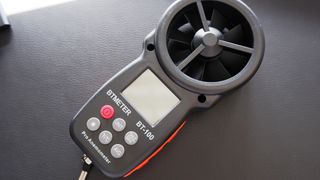
There are a lot of fans out there, adoring or otherwise, so we had to set a few guidelines. First, we limited our tests to 120 mm fans. It's not because we hate 140 mm. On the contrary, 140 mm fans are generally quieter and move more air, making them a great choice for any case that can handle the larger size. But 120 mm is still the "default" case fan, and it's hard to compare different fan lines when you're also comparing different sizes, so we stuck to 120mm versions as a control. (We've tried to provide the model number for the 140 mm version where possible.)
With that in mind, we contacted a number of the most popular case fan manufacturers and had them send over both their best-selling and their personal favorite 120 mm models. Then we hacked together a miniature wind tunnel with an anemometer inside, a device that measures airflow. This helped us match airflow between different fans at different RPM.
We then maxed out the RPM on each fan to test a theoretical airflow limit and measure the noise they produce—all fans tend to ramp up in volume at max RPM, but some absolutely screech. Chances are you'd never run most of these fans at 100%—that's why they're PWM fans! But if you have an older motherboard without PWM (or have a system that runs hot), you might hit this limit, and it's good to know how loud your PC could potentially get and how much air these fans hypothetically move. We also turn the fans down to see how they sound at a more reasonable 1,200 RPM and measure this too.
As for RGB lighting? Well, we have eyes for those tests. But how simple these fans are to set up and use also plays a factor in which gets our stamp of approval.
How to spot the best deal
Where are the best PC fan deals?
In the US:
Amazon - Often $10 or more off the best PC fans
Walmart - Discount PC fans
B&H Photo - A small selection of case fans
Newegg - Great PC fans with $20+ savings
Best Buy - Save up to $34 on some of the best PC fans around
In the UK:
Amazon - Small discounts on PC fans
Overclockers - Air cooling champs for less
Ebuyer - Up to £10 off case fans
The biggest gaming news, reviews and hardware deals
Keep up to date with the most important stories and the best deals, as picked by the PC Gamer team.

Jacob earned his first byline writing for his own tech blog. From there, he graduated to professionally breaking things as hardware writer at PCGamesN, and would go on to run the team as hardware editor. He joined PC Gamer's top staff as senior hardware editor before becoming managing editor of the hardware team, and you'll now find him reporting on the latest developments in the technology and gaming industries and testing the newest PC components.
Most Popular





